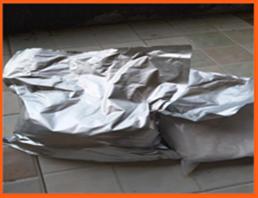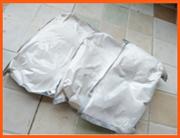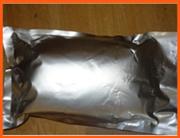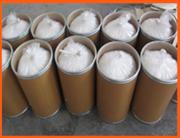Basic Overview :
Product Name:Triamcinolone acetonide 21-acetate
Synonyms:9-fluoro-11beta,21-dihydroxy-16alpha,17-(isopropylidenedioxy)pregna-1,4-diene-3,20-dione 21-acetate;9-Fluoro-11b,21-dihydroxy-16a,17-(isopropylidenedioxy)pregna-1,4-diene-3,20-dione 21-acetate;Triamcinolone acetonide 21-acetate;21-(Acetyloxy)-9-fluoro-11β-hydroxy-16α,17-[(1-methylethylidene)bis(oxy)]pregna-1,4-diene-3,20-dione;9-fluoro-11β,21-dihydroxy-16α,17-(isopropylidenedioxy)pregna-1,4-diene-3,20-dione 21-acetate;Triamcinolone aceton;21-(Acetyloxy) TriaMcinolone Acetonide;20-dione 21-acetate
CAS:3870-07-3
MF:C26H33FO7
MW:476.5344232
EINECS:223-388-5
Product Categories:Intermediates & Fine Chemicals;Pharmaceuticals;Steroids;Steroid and Hormone
Chemical Properties:White Solid
Usage:LDerivative of Triamcinolone Acetonide, a glucocorticoid, antiasthmatic (inhalant); antiallergic (nasal).
Description :
Triamcinolone acetonide as an intra-articular injectable has been used to treat a variety of musculoskeletal conditions.
When applied as a topical ointment, it is used for blistering from poison ivy, oak, and sumac, applied
to the skin, avoiding eyes, mouth, and genital area. It provides immediate relief and is used before using oral prednisone. Oral/dental paste preparations are used for treating aphthous ulcers.
As an intravitreal injection, triamcinolone acetonide has been used to treat various eye diseases and has been found useful in reducing macular edema. Drug trials have found it to be as efficient as anti-VEGF drugs in eyes with artificial lenses over a two-year period.Uncommonly, intramuscular injection of triamcinolone acetonide may be indicated for the control of severe or incapacitating allergic states for which conventional treatments have failed, such as asthma, atopic dermatitis, contact dermatitis, perennial or seasonal allergic rhinitis, serum sickness, and transfusion and drug hypersensitivity reactions.
Application of Dexamethaslo:
Triamcinolone acetonide is a synthetic corticosteroid used to treat various skin conditions, to relieve the discomfort of mouth sores, and in nasal spray form, to treat allergic rhinitis. It is a more potent derivative of triamcinolone, and is about eight times as potent as prednisone.
Triamcinolone acetonide as an intra-articular injectable has been used to treat a variety of musculoskeletal conditions. When applied as a topical ointment, it is used for blistering from poison ivy, oak, and sumac, applied to the skin, avoiding eyes, mouth, and genital area. It provides relatively immediate relief and is used before using oral prednisone. Oral and dental paste preparations are used for treating aphthous ulcers.
As an intravitreal injection, triamcinolone acetonide has been used to treat various eye diseases and has been found useful in reducing macular edema. Drug trials have found it to be as efficient as anti-VEGF drugs in eyes with artificial lenses over a two-year period.
Uncommonly, intramuscular injection of triamcinolone acetonide may be indicated for the control of severe or incapacitating allergic states for which conventional treatments have failed, such as asthma, atopic dermatitis, contact dermatitis, perennial or seasonal allergic rhinitis, serum sickness, and transfusion and drug hypersensitivity reactions.
Triamcinolone acetonide is also used in veterinary medicine as an ingredient in topical ointments and in topical sprays for control of pruritus in dogs. A series of injections with triamcinolone acetonide or another corticosteroid may reduce keloid size and irritation. It is also used as a preinductor and/or inductor of birth in cows.
Many drugs have been demonstrated to increase triamcinolone acetonide concentration in the blood to well above the intended level. Patients should inform doctors about any other drugs they are taking.Triamcinolone acetonide should not be used by those with tuberculosis or untreated fungal, bacterial, systemic viral or herpes simplex infections without consulting a doctor first.
COA
| Item |
Specification |
Result |
| Appearance |
An odorless, almost white or buff colored powder |
Pass |
| Loss on Drying |
Not more than 4.0% |
0.46% |
| Assay(HPLC) |
Not less than 95.0% |
99.18% |
| Levothyroxine sodium |
Not more than 5.0% |
0.68% |
| Conclusion |
Up to the Standard for Export. |


 China
China

